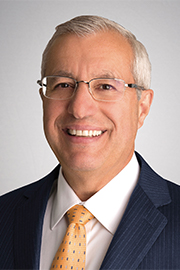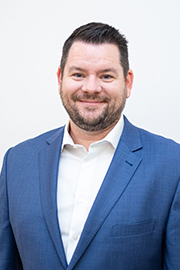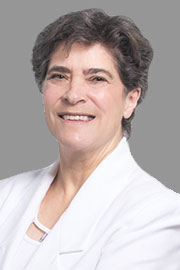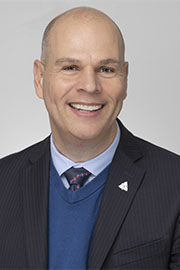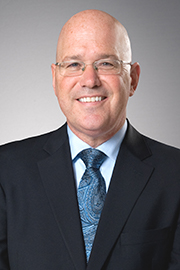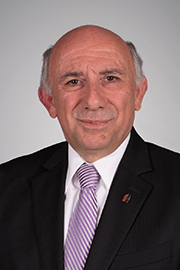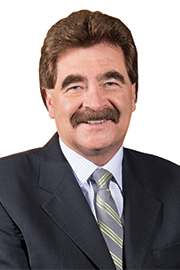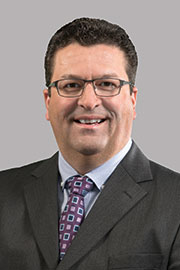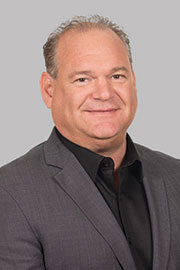- Feb/23/23 9:40:00 a.m.
That is applause-worthy. It really is.
The auto sector accounts for 100,000 jobs throughout the province, and for the very first time in the history of the auto sector, northern Ontario will now be included. The auto sector now, because of electric vehicles, takes in critical minerals, the processing of critical minerals, the production of the parts for batteries, batteries, the production of auto parts—we have 700 parts makers in Ontario, and 450 tool and die and mould makers in Ontario. We’ve got 300 companies that are in the connected and autonomous vehicle business.
Think about the very first electric vehicle in Canada that came off the assembly line only a month or so ago, GM’s BrightDrop. It’s basically a FedEx delivery vehicle, the very first electric vehicle rolled off the assembly line. It was designed and engineered in Markham, Ontario, by GM. Seven hundred employees are there.
Ford has 500 of these types of employees in Ottawa. BlackBerry QNX has about 500 in Ottawa as well.
In Windsor, Stellantis has about 800 employees. They’ve put in almost a billion dollars and have two—two—North American centres of excellence, research centres. It is their head location for battery design and battery research.
That’s what’s happening in Ontario, and it’s because we’re competitive that we have this edge. We have a talented workforce. We have state-of-the-art research and development. We have award-winning manufacturing.
Look at Toyota. Toyota won the J.D. Power award for the best production plant in the world. This isn’t the best Toyota plant; it’s the best auto plant in the world. And because of electric vehicles, we now have this critical mineral part of it that’s added.
But we’ve also got a clean energy advantage. Speaker, if you bought an electric vehicle in the United States, you would think you’ve made a contribution to society by buying an electric vehicle. But in the US it’s made, sadly, with energy that’s made from burning coal. So if you buy a car that has a battery made in Kentucky, you’ve got about 6% clean energy. If you buy a car that has a battery made in Indiana, you have about 7% clean energy. You’ve got assembly plants that are made without clean energy. You’ve got steel in the doors and the hoods that are made with coal-produced steel.
Shift to Ontario for a second. You’ve got a clean energy environment—94% clean energy is what we build our cars with. Our battery companies will be able to buy an equivalent of 100% clean energy. At Dofasco and at Algoma, they’re now making steel not from coal, but from an electric arc furnace, which means we have green steel building our cars, with clean energy building our cars. So when you buy an electric vehicle, as they start to come off the assembly lines in Brampton and in Oakville and in Windsor, you will have a car that you can be proud of because it is not just an electric vehicle, it is a zero-emission—a green—vehicle, which will be the envy of the EV sector. That is a very, very big component. Think about Dofasco alone. You’re talking about the equivalent of taking a million cars off the road a year just by that one conversion alone.
The critical minerals are something that I think will be the sleeper story this year. I think it was the Windsor Star that did an interview and they asked, “What is going to be the exciting news this year?” And I said, “You watch. The sleeper story will be a lithium hydroxide plant for northern Ontario.” I genuinely believe that. I don’t normally overpromise because we don’t like to ever underdeliver, but I can tell you I really believe that we are going to see lithium projects in northwestern Ontario start to happen, and they’re going to need a lithium hydroxide plant. You need that liquid to make a battery, and we believe that the minerals of northern Ontario should be processed here in northern Ontario and tie the auto sector into the north for the very, very first time.
We have a real competitive advantage. Ontario is one of the very few jurisdictions that has every mineral necessary to make a lithium ion battery. We’ve got great, great new nickel finds around Timmins, if you can imagine—a gold town like Timmins. South of Timmins they have a fabulous new nickel find. Just north of Timmins, Canada Nickel is there with a great new nickel find.
In Sudbury, where we’ve seen Onaping Depth go down—it’s an old mine that couldn’t get any deeper because of the technology. Well, today you can actually send electric vehicles down there. You don’t need to worry about ventilation anymore because you’ve got electric vehicles doing the heavy work. They’re going to go deep, as deep as they possibly can. That’s because of the electric vehicle revolution.
Then we look at the Ring of Fire. Initially, the play was all about the chromite that is there. I think you’ll actually see them move the chromite out of the way to get to the nickel that’s there.
That’s why we’ve got this road to prosperity that we’re building. We’ve got $1 billion committed. We hope our federal partners will commit their $1 billion into that plan.
Bloomberg has acknowledged everything I’ve just said here today. Bloomberg ranked Canada as second in their annual global battery supply chain report. Think of where we were three years ago. We had zero—zero—electric vehicle production. Some $300 billion was invested in North America in electric vehicle and battery announcements. We got zero of it under the previous government—zero. We were able, through our Driving Prosperity plan, to put a plan together—$17 billion. I’ll be very frank: We have at least that much in the pipeline. We won’t win it all, but we’ve got a big pipeline of projects lined up for Ontario over the next two years. Bloomberg moved us from nowhere in sight of anybody to second in their annual global battery supply chain report. We’re first in North America, ahead of the US, second globally. That confirms that we have indeed created the right conditions to attract investments, create jobs and remain competitive.
That brings us to the one missing piece: why we’re here today. We are in fierce competition right now for large investments. As I’ve said, we have a big pipeline filled with projects, but we just don’t have the land. We need to assemble, very quickly, large pieces of land for large potential investments. Close to 40 US jurisdictions offer a certified mega site program—key competitors, all through the States. They have shovel-ready sites and an expectation of an investor locating there. That’s why we are laser-focused right now on securing large anchor projects in the auto and in the EV space, but this critical factor will be having a suitable site.
Timing is known. Costs are known. Project timelines are out there. We know we needed this land, and that’s why, in November 2019, we launched the Job Site Challenge program. This is Canada’s first challenge that went out where municipalities, economic development agencies and industrial property owners can put forward large tracts of land—500 acres, 1,000 acres, 1,500 acres—so that we can use them to support large-scale manufacturing operations. Just think about it. For context, 500 acres—that’s almost 400 football fields. That’s what 500 acres looks like. And 1,500 acres obviously can support three times that.
We need to immediately build an inventory of what we call mega sites. These are sites that are investment-ready. These are sites that would be owned, contiguous pieces of property, either serviced or ready to be serviced. We’ve seen the successes of LG Energy in Windsor. We’ve seen the success of Umicore in Loyalist township. There is a significant demand for shovel-ready sites.
Again, I’ve said we have a big amount in our pipeline. We’ve secured $17 billion, with several more announcements coming. We have about that much in our pipeline. But what we need is to give the investors and those potential companies the confidence in the future of Ontario—that we have land available for them.
This particular site in St. Thomas that we’re speaking about, and in Elgin county, is considered a highly attractive mega site. It has been identified as one of the very few potential mega sites in the province. It has a vast amount of acreage. It has close proximity to the major routes. It’s fully serviceable for electric, gas, water, waste water. And it has a high probability that it could be sold to one of these investors.
The site, as you’ve heard from Minister Clark, straddles two municipalities: the city of St. Thomas and the municipality of Central Elgin, which is in Elgin county. These two municipalities have very different steps in permitting requirements. They have different timelines for permitting. It creates confusion and complexity. You could imagine an investor who wants to buy a big hunk of land but has two municipalities with different rules and guidelines—a building that could potentially straddle two municipalities. We need to take the piece of one and join it to the other. There’s a lot of red tape that could come. There’s a lot of delay in meeting timelines.
Speaker, we need to unlock the full potential of this site, and that’s why the Minister of Municipal Affairs and Housing has introduced legislation that would change the municipal boundary so that site would be completely located in St. Thomas. It would reduce red tape. It would ensure that the St. Thomas site is truly shovel-ready in a very near term for a potential investment. This legislation would allow the city and the province to proceed quickly with permitting, proceed quickly in preparing the site to meet any potential investor timelines. It’s going to allow Ontario to remain competitive. It will allow us to position the province as an attractive place to invest and to grow.
These proposed changes have the potential to bring significant economic benefits to the people of St. Thomas, to the people of Central Elgin and all of the surrounding communities. We’re going to work very closely with the affected municipalities with respect to proposed legislative changes. We’re going to continue to consult with Indigenous communities about the St. Thomas industrial site.
And we will continue to work very, very hard to identify large-scale industrial sites throughout Ontario, where we know that we have so many prospects and so little assembled land.
We continue to say that Ontario is the ideal destination for manufacturers. We have a world-class auto supply base, we have a growing EV and battery-supply-chain footprint, we have reliable clean energy, we have northern Ontario’s critical mineral resources—we have an ecosystem in Ontario.
Certainly, we have one of the greatest auto ecosystems. We’re the only jurisdiction in North America with five different auto manufacturing companies. That’s unique in all of North America. We are the number two automaker in North America.
Speaker, we’re also the number two tech cluster in all of North America. When you look at the cars of the future, it’s basically going to be a computer on wheels. Well, as the number two tech cluster in North America, we have that tech ability, and as the number two automaker, we know how to attach them to wheels. That’s our expertise. We have absolutely great and spectacular days ahead of us in Ontario in the auto, in the EV sector.
But these mega sites can be for all kinds of projects, whether it’s in the tech field, whether it’s in the life sciences field, whether it’s in the aerospace sector, whether it’s in the chemicals sector. We have so much potential in Ontario, and I won’t say it’s untapped potential, because look at what we have achieved: 600,000 men and women went to work today in a facility in Ontario that they did not work at only four and a half years ago. This is a monumental shift in what was happening.
We saw the decline of Ontario’s manufacturing—the former government that threw the towel in and, in writing, gave up on the manufacturing sector.
Premier Ford came along, and Driving Prosperity was written. It was our blueprint for success. That’s why we have 600,000 men and women working today who weren’t working.
- Hear!
- Rabble!
- Feb/23/23 10:00:00 a.m.
Thank you to the member for the question.
It’s interesting, in the auto sector—you always hear about these indirect jobs that are created. When I was mayor of the city of North Bay and my economic development team would say, “Well, they’re going to bring 10 jobs, but there are going to be 40 spinoff jobs,” I never understood and never acknowledged that that was actual. They were talking about a big stretch. But in the auto sector, they’re not talking about a stretch, because the auto companies assemble vehicles; they don’t make many of the components. So for every $1 that’s invested, for every job that goes to an auto plant, you can see about $7 to $9—some will say $12—invested in the other sectors. You will see seven to nine to 12 jobs created in the other sectors. They don’t make a tire. They don’t make a steering wheel. They don’t make a windshield. Somebody else makes that for them. So when you have an increase in a plant, you have an increase in jobs all around.
Because it’s critical minerals now from the north—no matter where you are in Ontario, you are now going to benefit from the auto investment.
We’ve got a number of other advantages that I did not have an opportunity to speak about. I talked about the fact that we have this ecosystem here in Ontario, but it’s supported by this beautiful talent that we have, which is rejuvenated every year by 65,000 STEM grads—science, technology, engineering and math—every year. We have this unique ecosystem that also includes trade deals with 50 different countries around the world. So when you are building something in Ontario, you have the opportunity to export that, tariff-free, to most countries in the world—an extremely competitive advantage.
- Hear!
- Rabble!
- Feb/23/23 10:00:00 a.m.
To the Minister of Economic Development, Job Creation and Trade: We lost roughly 20,000 manufacturing jobs in Waterloo region under the tenure of the former Liberal government. That was a huge blow to our region.
I only caught about the last 10 minutes of his dissertation, if you will, but I was wondering if he could touch a little bit on what these types of investments mean to communities not just in southwestern Ontario, but all across Ontario—I think it does truly speak to the prosperity that is ahead when we see this type of investment coming to the province—and what they mean to the average, everyday person.
- Hear!
- Rabble!
- Feb/23/23 10:00:00 a.m.
I am having a great deal of difficulty hearing the minister of housing and the member from Thunder Bay–Atikokan make claims about supporting more homes for everybody—including supports for non-profit housing—since you know very well that the two shovel-ready projects I’ve been talking about for the last six months in Thunder Bay have not been able to access any support or funding from this government. There doesn’t appear to be a funding stream available for not-for-profit housing projects. These projects would bring 100 new living units to Thunder Bay.
I’m wondering when the government will be creating the appropriate revenue stream so that these projects can be supported and go ahead.
- Hear!
- Rabble!
- Feb/23/23 10:00:00 a.m.
It is now time for questions and answers.
- Hear!
- Rabble!
- Feb/23/23 10:00:00 a.m.
Thank you to the members opposite.
When the Minister of Municipal Affairs and Housing was speaking, he talked about housing and supporting municipalities.
Our city council is working on the budget this year, and they’re very concerned about property taxes going up. One of the reasons they’re concerned is because citizens are very upset about paying more taxes but having potholes and snow plow issues all the time. One of the issues that they’re struggling with is the downloading of developer service fees from housing and the fact that, in Sudbury, for the supervised consumption site, the province still hasn’t chipped in $1.1 million.
I’m asking the minister: Do they plan to compensate the city of Sudbury for the shortcomings from the province?
- Hear!
- Rabble!
- Feb/23/23 10:00:00 a.m.
My question is for the Minister of Economic Development, Job Creation and Trade.
It’s reassuring to know that our government is making every effort to attract new investments, remain competitive and create new, good-paying jobs. I applaud the government for introducing legislation that will continue showing the world that Ontario means business and that Ontario is open for business.
As the government continues implementing its ambitious plan to build Ontario’s economy, I’m reminded that this legislation is not the only wrench in the tool box.
Can the member elaborate on the other efforts the government is using to attract investments, while also ensuring that our own businesses and entrepreneurs here at home have everything they need to create jobs and build the Ontario of tomorrow?
- Hear!
- Rabble!
- Feb/23/23 10:00:00 a.m.
Good morning to everybody again. I’m very excited that we had the opportunity to table this game-changing bill in the Legislature. I appreciate that the member wants to ask a question about Bill 23.
We are continuing to work with municipalities to understand the financial costs that they’ll be under. Many municipalities already incent development, already incent affordable housing, already incent attainable housing, so this is not a new concept. It might be new for Sudbury.
We will be pleased to take a look at the numbers that the member obviously has received from his council, and we’ll be more than happy to give him a very lengthy, detailed response.
Again, I want to encourage all of the members opposite to have a relationship with their service manager. Those are the people who are on the ground, the DSSAB—she’s shaking her head; I guess she doesn’t want to have a good relationship with her DSSAB. But if there’s an affordable housing project that a community wants, the first opportunity they should have is to sit down with the district social services administrator to talk about the available programs that the government of Ontario has, along with the federal government, under the National Housing Strategy. This is our system. We work collaboratively with our service managers. They do great things on the ground. Despite her shaking her head, I happen to be very supportive of what her DSSAB does, and I look forward to continuing to work with them.
- Hear!
- Rabble!
- Feb/23/23 10:10:00 a.m.
Further questions?
Second reading debate deemed adjourned.
- Hear!
- Rabble!
- Feb/23/23 10:10:00 a.m.
This year is the 100th anniversary of the Chinese Immigration Act of 1923, also known as the Chinese Exclusion Act. This act virtually banned the entry of Chinese immigrants for 24 years. This tragic exclusion separated families for almost a quarter of a century. To commemorate the anniversary, the Tribute to Early Chinese Immigrants Canada Foundation, the Markham Museum, and the York Region District School Board, together with researchers at the University of Toronto and many other stakeholders, will create a rotating exhibition for the GTA. In addition, there will be commemorative events such as concerts, tree-planting, workshops and cultural performances.
The launch of the activities will take place on Tuesday, March 21, which is the United Nations International Day for the Elimination of Racial Discrimination, and it will culminate with Asian Heritage Month.
The intention of these activities is to bring “final closure to this unjust treatment,” as one of the organizers stated. Furthermore, it is their wish to ask Canadians to join hands in making our country more harmonious, inclusive and respectful to one another, and moreover, to educate and sensitize future generations with the devastating consequences of racism.
The early Chinese immigrants’ hard work, perseverance and determination contributed to building Canada as the best country in the world. Many of the descendants of the head tax and the exclusion act—are now residing in Ontario. It is our duty to bring healing and closure for the survivors and their descendants.
I would like to take the opportunity to thank former citizenship judge Nancy Siew for her diligent work on this file.
- Hear!
- Rabble!
- Feb/23/23 10:10:00 a.m.
It’s always a pleasure to stand up in this House.
I’ve been involved in the auto sector for the last 40 years, and I can tell you, what really killed the auto sector in the province of Ontario was when the Harper government allowed our dollar to go to $1.10; today, it’s at 75 cents.
I want to talk to the minister directly. As you stand up and continue to take credit for the electric vehicles in the province of Ontario, I’m going to tell you who should get credit for it—and it certainly isn’t the government: It’s the bargaining committees of GM, Chrysler and Ford that went to the bargaining table under the threat of the Oshawa plant closing. It was the rally they had—including the union taking out Super Bowl ads at an incredible cost to the membership. But do you know what happened? They went to the bargaining table, and they were able to negotiate exactly where the auto sector is going. They saved the auto industry.
So I think what you should do, when you stand up, is thank the unions, thank the workers who are in those plants that are putting out the best product—not just for the last four years; they’ve been putting out the best product in North America for the last 40 years. We have the best auto workers in the world. That’s why we’re getting the work—
- Hear!
- Rabble!
- Feb/23/23 10:10:00 a.m.
The winter Carnaval period and March break are upon us, so today I would like to highlight some of the activities that will be happening in my riding from Hearst to Jogues, and all the way through to Smooth Rock Falls, over the next few weeks.
Starting as early as today, to name a few activities, there will be night skiing at Moonbeam ski hill, a crib tournament, a dabber bingo, a casino and wine-tasting evening in Moonbeam, an adult social evening at the Smooth Rock Falls Curling Club, a virtual bingo and public skating.
There are multiple children’s and family activities across the community, such as big-screen movies, road hockey tournaments, a soapbox sled competition, a polar bear dip in the Kapuskasing River, multiple concerts at the centre de loisirs and a Ski-Doo poker rally.
I can’t name them all, but I encourage our residents to take a look at the great carnival schedules prepared by our municipalities on Facebook, as there’s something to do for everyone.
I would like to wish everyone lots of fun and a happy and safe winter carnival and March break.
C’est le temps des carnavals d’hiver et le congé de mars arrive à grands pas, et nos communautés n’ont rien laissé à leur épreuve. Je vous invite tous à regarder aux calendriers préparés par les municipalités sur Facebook pour ne rien manquer.
J’aimerais souhaiter à tous les résidents beaucoup de plaisir lors de cette période de carnaval, et un beau congé d’hiver.
- Hear!
- Rabble!
- Feb/23/23 10:10:00 a.m.
When I have visited our prospects worldwide, we bring up the fact that Toyota was named the number one production facility in all of the world—again, not just the number one Toyota facility, but the number one auto plant worldwide.
And I have to say that the lowering of the cost of doing business in Ontario is a key factor—$7 billion. Premier Ford and I visited every auto plant, and they all told us, “You need to lower the cost of doing business in Ontario,” and you saw us do that by lowering the cost of business by $7 billion.
Plus, we have incentives that we have provided to every one of the companies I’ve mentioned. They tally about $2.5 billion. We have decided to put our $2.5-billion investment in the EV sector, into the plants, to hire these workers.
- Hear!
- Rabble!
- Feb/23/23 10:10:00 a.m.
The Welland hospital is a full-service hospital that serves the fastest-growing area of the Niagara region. This hospital would not exist without the endless support from our community. In 1945, the Welland hospital auxiliary formed to help fundraise for the site. Over the years, they’ve continued that work, raising $750,000 to renovate the ICU and $1 million towards a dialysis unit named after them. Countless community organizations, like the Hungarian cultural society, saw the need for this hospital and contributed what they could.
Unfortunately, Niagara Health recently confirmed that services at the Welland hospital will be significantly reduced. As of February 27, emergency surgical services in Welland will be cut in the evenings and on weekends. Families in Welland, Port Colborne, Thorold and Pelham who show up at this hospital and need to be in an operating room within the hour will have to wait for an ambulance to take them to another hospital. Doctors and nurses at the hospital have told us this will create dangerous situations for patients, leading to poor outcomes and unnecessary deaths.
In April 2022, this House passed my motion to maintain full emergency department services and acute-care services in Welland to ensure that there are safe, equitable hospital services throughout the Niagara region. I look forward to working with the minister and this House to ensure the government honours its commitment to maintain these crucial emergency services.
- Hear!
- Rabble!
- Feb/23/23 10:10:00 a.m.
February 21 is International Mother Language Day.
Born and raised in Punjab, Punjabi is my mother tongue—the language in which I uttered my first word. Punjabi is the mother tongue of almost 400,000 residents serving Ontario.
Punjabi Arts Association is one such organization that has been working tirelessly for over 31 years to promote the Punjabi language and its culture through intergenerational platforms of expression where conversations and addressing community issues and concerns are high-lighted through theatre, music and other art forms.
Madam Speaker, art binds and strengthens communities. It helps promote and preserve Canada’s cultural diversity. In Ontario, our government and its granting agencies are the biggest champion of artists and arts organizations.
In 2022, PAA produced seven scripts, held monthly acting workshops, and hosted fun and engaging improv events in Punjabi.
Recently, I had the pleasure of attending PAA’s Canadian Punjabi Kavi Darbar, a night of Punjabi poetry. I was impressed to see our Ontario youth tackling social issues with choices of words that were thought-provoking.
Thank you to the board members, volunteers, sponsors and supporters of PAA for serving and promoting mother language. You make us all proud. Remarks in Punjabi. Punjabi Arts Association, my best wishes, always stay in high spirits.
- Hear!
- Rabble!
- Feb/23/23 10:20:00 a.m.
This past Sunday, I had the opportunity to attend a wonderful event. I was invited to drop the puck at a local hockey game. In various roles, many times over my municipal career and now as an MPP, I’ve had the chance to drop a puck. It is always an honour, but this one was special.
The young teammates of the Wellington Dukes, including four members of the Mohawks of the Bay of Quinte, decided to make this game have a cultural message as well. They recognized that, for many of us, hockey is a Canadian thing. Young or old, male or female, settler or First Nation, one of the things that almost everyone in this country shares is some level of passion and a knowledge of hockey.
Another common element is the collective heartbreak that we have all felt as the discoveries of graves at residential school sites across the country have occurred.
As a country, we have not done a good job in providing the education and the cultural understanding of the devastating impact of the imposition of the residential school system for multiple generations and the long-term impact of this horrific chapter in our history.
So I was very pleased to see the efforts to bring more awareness to that history. Using hockey to cross all cultures within Canada, and specifically in my area of eastern Ontario, is both very appropriate and should be very effective.
I want to thank the Wellington Dukes, the participants and the audience in attendance. I hope they enjoyed the game, and I hope they will take some time to learn the truth. We need to recognize the past to build a better future for all Indigenous persons and for all of Canada. Thank you, Speaker. Meegwetch.
- Hear!
- Rabble!
- Feb/23/23 10:20:00 a.m.
Good morning, colleagues. It is my pleasure this morning to tell you about something very exciting that happened recently in our Grey-Bruce community. I know many of you would expect me to be telling you about Groundhog Day on February 2. Well, it was indeed a great morning in Wiarton. The fireworks at 7 a.m. were spectacular, and Willie was his usual eloquent self communicating his forecast. As you heard, he said it would be an early spring this year.
But no, colleagues, this morning I want to tell you about something more exciting than Wiarton Willie, and that’s a new school in Markdale. On February 7, I was thrilled to announce that the Bluewater District School Board had been given approval to proceed with the new replacement for the Beavercrest public elementary school in Markdale. This will be an investment of $15.5 million, an increase of $6.9 million. The new school will be an absolute jewel. It will have 328 new student spaces, 39 new child care spaces, two new child care rooms and a two-room EarlyON family centre.
Thank you, Minister Lecce, for your constant support. You have been there from the start for Markdale.
Thank you, Minister Surma, for your great leadership in the government’s infrastructure program.
Thank you, Bill Walker, for your energetic support over the years.
Thank you, Wiarton Willie.
And thanks to this government for your support of Markdale.
- Hear!
- Rabble!
- Feb/23/23 10:20:00 a.m.
I stand today to recognize that it has been one year since the horrific Russian invasion of Ukraine. As a nation, we must continue to support Ukrainians as they struggle for peace, freedom and democracy. They have shown the world incredible bravery and resilience as they face unimaginable challenges. I stand today to honour them and the thousands of people who have lost their lives and loved ones to this selfish act of terrorism. In my own community of Oakville North–Burlington, I’ve heard so many tragic stories about displaced Ukrainian families. I stand today for them, for the pain they’ve had to endure, and yet I remain humbled by the remarkable resilience and strength of the human spirit.
At a Christmas celebration with the families at St. Volodymyr’s Ukrainian church, Father Jaroslav told me that Ontario has provided a sense of community and safety that was desperately needed amidst the horrors of the war in Ukraine.
I’m proud of the work we have done by welcoming refugees and providing them with health care, emergency housing, education and other assistance like mental health supports.
We will not waver in our commitment to the people of Ukraine. We will continue to provide them with the support they need to rebuild their lives. We stand with Ukraine.
Let us never forget that the freedom and dignity of every human being is a fundamental right that must be protected at all costs.
Slava Ukraini.
Applause.
- Hear!
- Rabble!
- Feb/23/23 10:20:00 a.m.
I rise today to say it’s an honour to represent the people of Ajax.
February is Black History Month. It’s a recollection of our collective past and present achievements and a celebration of Black excellence.
Earlier this month, I was honoured to be a part of the 16th annual Durham Black History Month event, the largest put on by Cultural Expressions Art Gallery. Esther Forde and her team did an amazing job. Every year, this event presents the Madiba Award, named in honour of Nelson Mandela. This year’s Madiba Award was presented to Adam Brown.
Adam was born with retinitis pigmentosa, a degenerative eye disorder that affects peripheral vision, depth perception—and profound night blindness. Adam has led an amazing life despite his vision challenges. He took to TikTok with a lighthearted, self-revealing appeal to the public to join with him to reach out to their local MP to encourage the government to fully fund the treatment which would help thousands of men, woman and children with RP not to go blind over their lifetime. Almost three years later, with over 450,000 likes and 15,000 letters sent to the Ontario government, the gene therapy Luxturna was fully approved.
I would like to personally thank Adam for his advocacy and leadership in trying to make life better for thousands of Ontarians.
There’s no better moment than now to celebrate and remember the numerous ways in which Black people have continued to shape Ontario culture, economics and society.
- Hear!
- Rabble!
- Feb/23/23 10:20:00 a.m.
Speaker, as you know, Ontario has over 1.5 million residents with no access to primary care. They have no family physicians, no nurse practitioners.
In my riding, close to 30,000 people do not have access. In a part of my riding called the Valley, we had three physicians retire in the last year and, sadly, two weeks ago today, a very well-loved physician, Dr. McAlister, passed away quite suddenly, leaving behind thousands more patients, and there’s no physician replacement in sight. But we have solutions. We have nurse practitioners who are willing and able to take on those orphaned patients. All we need is the minister’s signature.
Carol, Dr. McAlister’s widow, called me and asked if I could get a nurse practitioner for her husband’s patients.
The Capreol Nurse Practitioner-Led Clinic has asked multiple times for $293,000—not millions; $293,000—for an additional nurse practitioner, receptionist and social workers. They will be able to supply primary care to hundreds of additional patients, offer same-day appointments, after-hours appointments, provide mental health services and much more. The Sudbury nurse practitioner clinic also presented a reasonable plan.
We could, in a matter of weeks, change the lives of thousands of people by giving them access to primary care. We could support Dr. McAlister’s orphaned patients.
Minister, the good people of Hanmer and Capreol need you to sign off on more nurse practitioner positions right now. Will you do it?
- Hear!
- Rabble!


